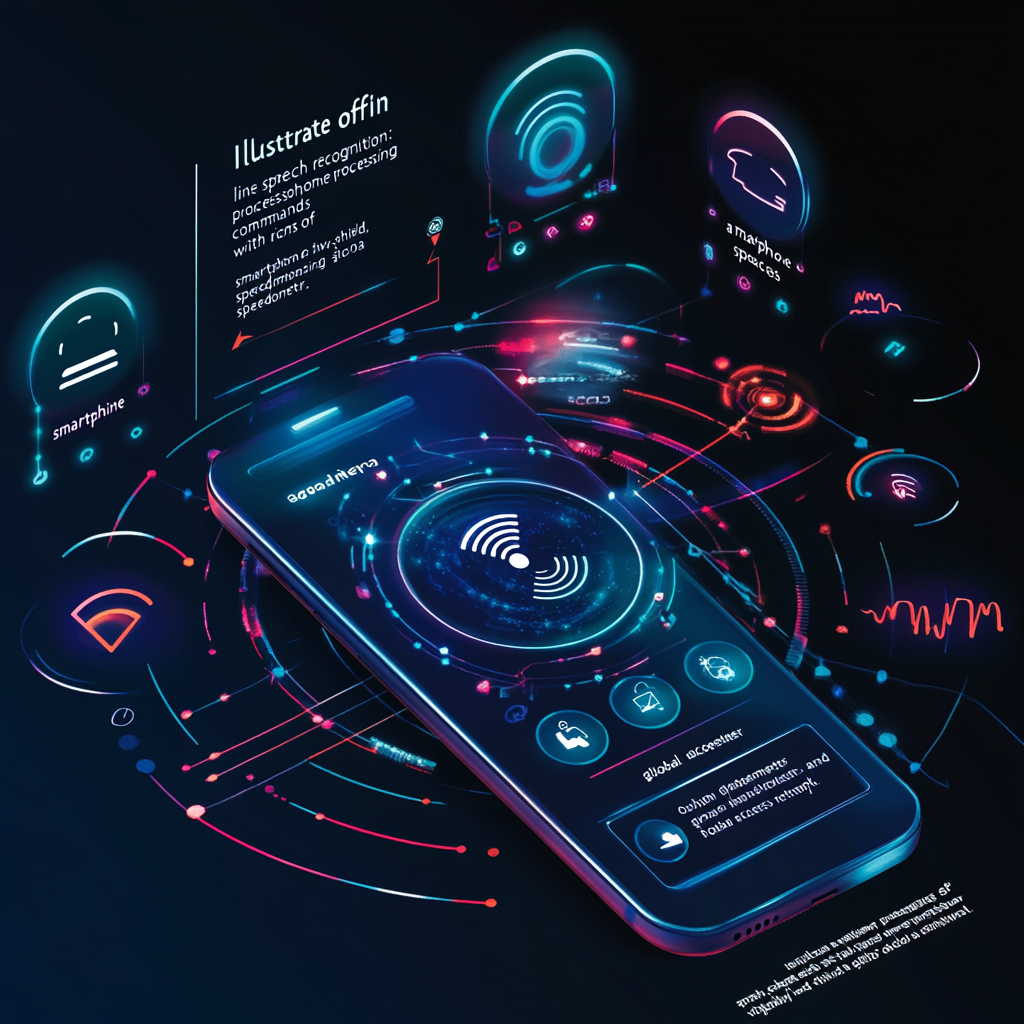
Imminent: Phone-Based Speech Recognition sans Internet
Talking to your devices is about to get a whole lot cooler—and a whole lot smarter. Imagine this: you’re out camping, standing in front of a majestic waterfall, and the last thing you want is to be tethered to a weak cell signal, trying to request directions or queue up your favorite hiking playlist. Enter offline speech recognition, a game-changing slice of tech heaven rapidly making its way into our smartphones and gadgets.
Now, before we jump into the nitty-gritty of how this works, let’s clear the fog surrounding offline speech recognition. It’s simple, really. This nifty feature allows your device to understand and respond to your voice without needing to hit the Wi-Fi or mobile data pathway first. Gone are the days when our voices had to be sent off to the cloud—where the digital gods toil away—before a simple command could be processed. Instead, everything happens right there on your device. Fancy, isn’t it?
So, how does the magic happen? Well, it's akin to making a fantastic sandwich: you need the right ingredients and a touch of culinary finesse. First, your spoken words transform into an analog signal—essentially the raw sound waves. Next up, you’ve got acoustic models swooping in like eagle-eyed hawks, dissecting those sounds into bits and matching them to specific words. It’s a dance of sounds and syllables where your device tries to figure out what you’re saying amidst all the chaos of life. Language models join the party last, working tirelessly to stitch your words into coherent sentences that make sense.
The beauty of offline speech recognition lies in its autonomy. Unlike its cloud-dependent cousins—who might lag behind when your connection stutters—it’s a little workhorse that can handle its own. However, don’t get it twisted; it does have its quirks. You’ll see, these amusing little gadgets have to gear up to handle different accents, environmental noises, and even the unique cadence of your voice without the comforting cushion of the Internet.
Now, let's talk about why you should give a hoot about this technology. First off, there's privacy—something that's become a hot topic in today’s digital age. Offline speech recognition keeps your data under wraps—no prying eyes peeking at your voice commands, because they never leave your device. You can read the gossip out loud about your aunt's fruitcake without worrying about it landing on some surveillance database in the sky.
Next up, think about availability. These tech wonders can be used anywhere—the boon for the adventurous souls who wander into the abyss of rural areas where cell signals are faint whispers of probably-existing connectivity. And let’s not forget how offline systems provide instant responses, saving you from the exasperating lag when you ask your device to perform a task. Plus, you can talk your phone's ear off in an airplane, making your travel experience a lot more enjoyable.
Now, you might be curling a skeptical brow as you wonder about where this tech can be applied in the real world. Let’s indulge that curiosity, shall we? Picture your smart home; those voice-activated speakers and thermostats that listen to your every word. With offline speech recognition, they’ll be obedient little servants, ready to respond even amidst a Wi-Fi outage. Wearable tech, including smartwatches and fitness trackers, can easily tap into these capabilities to help you stay on track without needing a lifeline to the Internet. And if you’re a driver, look no further than your trusty GPS— Garmin is already leveraging offline speech recognition to guide you, hands-free and stress-free, through those tangles of highways.
What’s new in this department, you ask? Well, Apple’s Siri can already do some tricks without the Internet, allowing you to set timers or launch apps just using your voice. And let’s not forget the boffins from the University of Copenhagen, who developed a brand-new algorithm that overcomes the limitations of memory in smaller devices. It’s like they’ve invented the speech recognition equivalent of bringing Tetris to a pocket-sized console—compact, efficient, and downright impressive.
But if you’re looking for a hitch in the giddy-up, you’ll find a couple of caveats. First, offline models are not quite as sharp as their connected counterparts. They struggle a bit with background noise or those tricky accents. Plus, they can munch up your device's processing power and battery life, which can be less than ideal on a long hike when you’re banking on your phone to preserve some juice.
For those eager beavers ready to take the leap into the world of offline speech recognition on Android, here's the scoop: go to your settings—yes, that treasure trove of options, then locate Language and Input, tap on Voice Input, and find that cog icon next to Enhanced Google Services. There’s your golden ticket—select Offline Speech Recognition, and download your preferred language from the joy of the "All" tab. Et voilà! You’re geared up for hands-free action even in the dead of wilderness!
In the grand scheme of things, offline speech recognition isn’t just a minor upgrade; it’s a significant shift that promotes efficiency, privacy, and accessibility. It’s set to reinvent our relationship with technology, allowing us to be the masters of our devices, even when they’re not hooked to the digital world.
Ready to keep your finger on the pulse of tech advancements with speech recognition and beyond? Join hundreds of tech aficionados and sign up for updates on our Telegram channel: @channel_neirotoken.
In the grand tapestry of technology’s evolution, voice interaction, untethered from the chains of the Internet, stands as a testament to our desire for convenience and control. Welcome to the future—let's embrace it, one spoken command at a time!

